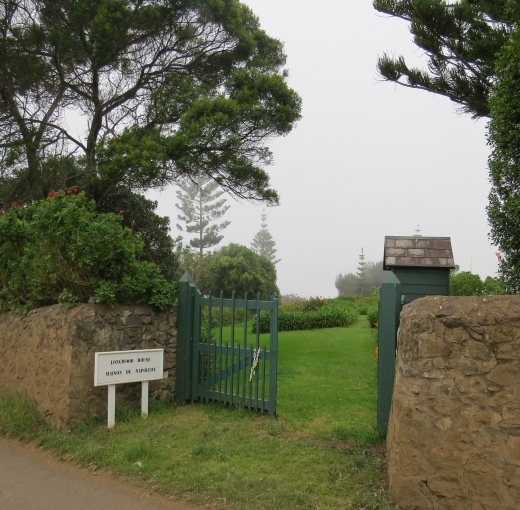Napoleon's Longwood
/An Emperor's Exile on St. Helena
Napoleon Bonaparte, aka Napoleon I (1769-1821) was the greatest military genius of his time and perhaps one of the greatest generals in history. He created an empire that covered most of western and central Europe. He was defeated by the British in the Battle of Waterloo in 1815 and exiled to St. Helena Island later that year.
Everywhere you go on St. Helena, there are references to their most famous prisoner. Local shops have lots of books, prints, postcards and all sorts of Napoleonic themed souvenirs available. In fact, we drove out of Jamestown via Napoleon Street.
Queen Victoria sold the land and buildings where Napoloen had lived and his burial site to the French. To this day, they maintain an official consulate in St. Helena and all the grounds are French territory. Though admission to the Napoleonic sites are free, reservations must be made in advance to visit the French territory.
There are three specific sites to visit and we set out to the Briars Pavilion first. When Napoleon first arrived at St. Helena, he was dissatisfied with the accommodations that had been prepared for him. He saw a beautiful home owned by the Balcombes and asked if he might stay there until the house in Longwood could be renovated to his liking. The Balcombes honored his request and he stayed for several months there while Longwood was upgraded.
Our host at Briars Pavilion was Trevor Magellan (great name, huh?) and Trevor knew his stuff. Only one room is open for viewing at the Briars, but Trevor's stories made the trip worthwhile. Interestingly, many pieces of original furniture and mementoes are on loan for the bicentennial commemoration of Napoleon's exile to St. Helena being held this year in France.
We next drove to Longwood, Napoleon's primary residence for his six years of exile in St. Helena.
Unfortunately, photography of any kind is prohibited (which riled me no end) inside Longwood. Our guide provided a well-practiced spiel as we walked from room to room...perhaps 6 or 8 rooms all told. On display was furniture including his bed, mementoes, lots of paintings and prints and even Napoleon's death mask ...all of which would be more interesting if only I could share photos with you. Grrr! One bit of trivia we learned was that Napoleon had carved peepholes in his shutters so that he could spy on his guards without them spying on him.
The house itself, though quite dark and damp inside, is lovely on the outside. Napoleon had gardens planted around Longwood through which he wandered and they are still beautifully maintained.
Napoleon died in 1821, having lived for six years on the island under constant surveillance. While there has long been speculation that the cause of death was arsenic poisoning, it is now believed that he died of cancer. He was buried with all the pomp and circumstance a small island could muster in a lovely meadow under willow trees, a spot he himself had chosen in the lush, green Sane Valley. The French exhumed his body in 1840 and his remains were returned to Paris. His empty tomb remains.
By the way, though Napoleon was probably the most famous person to be exiled on St. Helena Island, he was by no means, the only famous person to be exiled here. Several Boer generals were exiled here, as was Dinizulu, a famous Zulu chief.
The tiny HM Prison still houses a few prisoners, but none so grand as France's Emperor.
See a bit more of Napoleon's St. Helena at http://nineofcups.com/StHelenaAscension.html
Still some St. Helena stories left. We packed lots into a few days. Next, some time with Saints and a postbox walk up Flagstaff Hill.











